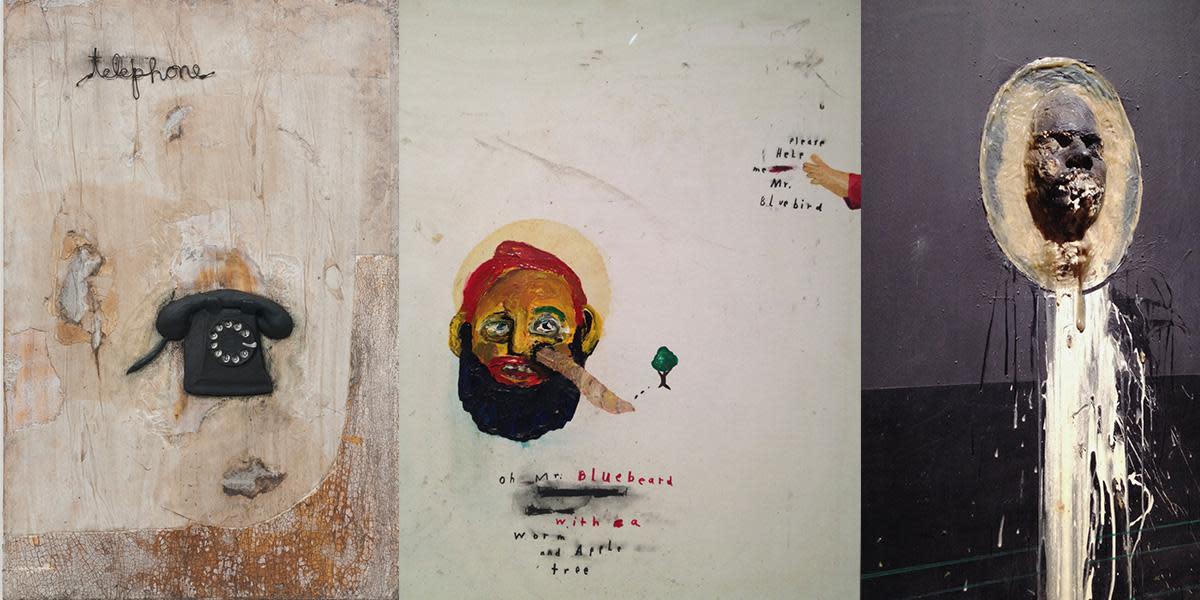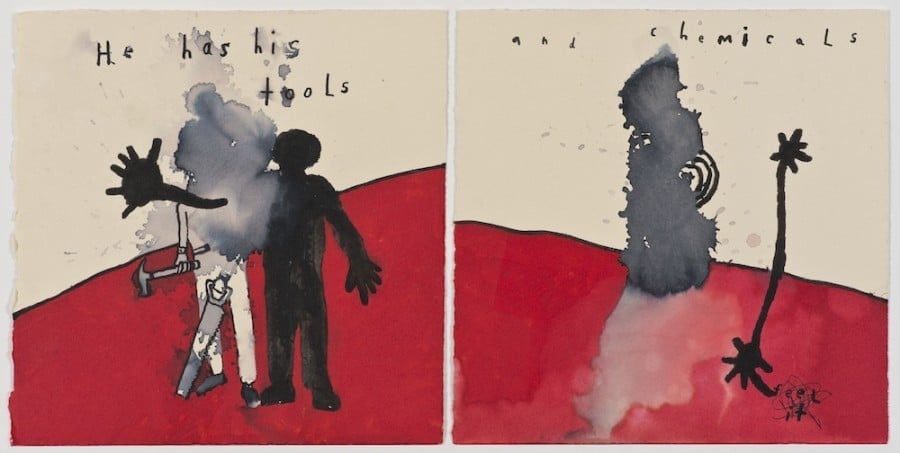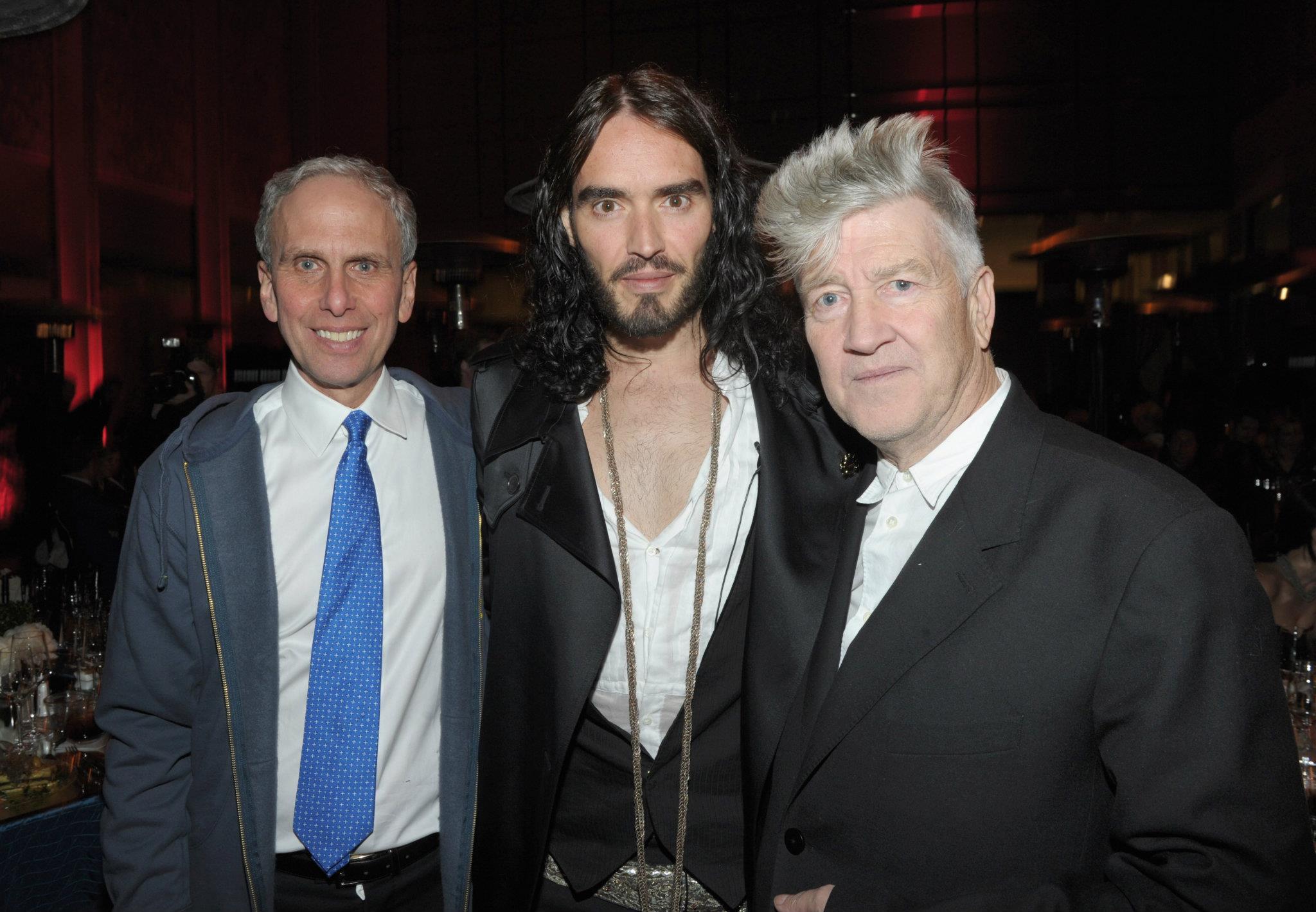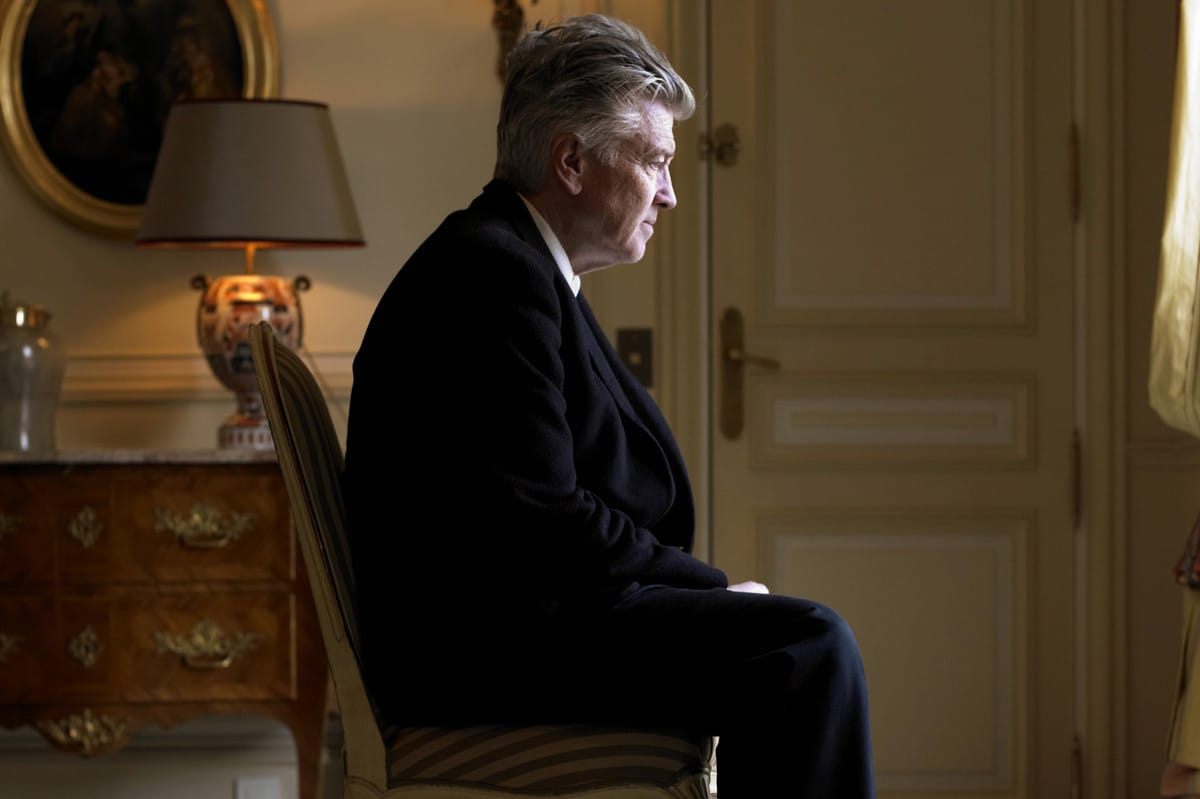There’s a widely-held belief that creative people are depressed psychopaths, and it’s not all wrong—study after study reveals links between troubled mental conditions and creativity. The faulty conclusion, however, is that you must be deeply troubled in order to make good art. To put it plainly: unhappy people can be creative, but creative people don’t have to be unhappy.
This has been David Lynch’s mandate since he started transcendental meditation in 1973. It was from the depths of his cool, calm mind that surrealist masterpieces like Eraserhead, Blue Velvet and Twin Peaks were born. That’s right, the person behind “Crazy Clown Time” sleeps peacefully at night.
“You don’t have to die to do a death scene. You just have to understand it in your own way,” Lynch told Simon Hattenstone, during an interview about the film Inland Empire. “Real suffering is something we don’t want. You could say it’s very romantic…it’s just to get chicks, and it works so well…But it is a joke for creativity. If you were really that way, you couldn’t work.”


Selected artworks by David Lynch
To spread the word about TM, the David Lynch Foundation For Consciousness-Based Education and Peace was launched in 2005. The organization focuses on making TM available to at-risk populations because this particular path towards enlightenment comes with a pretty heft price tag: $960 for a one-on-one instructor. For the average photographer, artist, designer or illustrator that doesn’t receive any funding, that’s a pretty big investment. More than the swankiest yoga class and definitely more than a pint of beer, which has actually been scientifically proven to make you more creative.
And yet, icons of creative thinking swear by this technique (Paul McCartney, Jerry Seinfeld and Mario Batali, just to name a few). If you want to get into the big leagues, maybe TM is your ticket. We contacted the David Lynch Foundation and spoke to CEO Bob Roth about why TM costs so much, if it’s worthwhile for creative people and why it’s not a cult (even though it kind of sounds like a cult).
Interested in creative thinking?
How Your Mother Affects Your Creative Thinking
How Horoscopes Affect Your Creativity
Does Marijuana Make You More Creative?
Format: Hi Bob Roth! Let’s start with the basics. What exactly is TM?
Bob Roth: Transcendental meditation is a very simple, natural, effortless mental technique that’s practiced for 15 to 20 minutes sitting comfortably in a chair with the eyes closed. It’s a silent technique. It’s done in the morning to start the day, and at the end of the day, ideally before dinner at the end of the day, so you have a lovely evening and sleep better at night.
Here’s what transcendental meditation is not: it’s not a cult, it’s not a religion. It’s not a philosophy. It’s not a change in lifestyle. There’s nothing to believe in. It’s a simple tool that gives any and every human access to a reservoir of creativity and intelligence that is said to lie deep within at the quietest level of the conscious mind and—tell me if my answers are too long.
Go for it.
Okay, I like to use this analogy: you’re on a little boat and you’re stuck in the middle of the Atlantic Ocean and all of a sudden you get these big 30 foot waves all around you, and you could think, ‘Oh my god, the whole ocean is in upheaval.’ But, if you could do a cross-section of the ocean, you’d realize that even though there’s turbulent waves on the surface, the depth of the ocean is silent.
In the same way, the surface of our mind is like the waves. It’s a scattered, agitated, active, noisy, ‘gotta, gotta, gotta’ mind. Not much creativity. There’s just noise. And it’s a natural human desire to have some inner calm, some inner clarity, some inner peace, some inner creativity. The question becomes: Is there such a thing as an inner, and if there is how do we get there?
With TM, we hypothesize that while we have the active noisy scattered mind, the thinking mind on the surface, every one of us has a level of our mind right now deep within us that’s already calm and settled and peaceful and wide awake, and it’s said to be the source of our unlimited creativity. So transcendental meditation is a single technique to access that reservoir of creativity that lies within. Long answer.
No, that’s perfect—great analogy. But what about artists who need turmoil to create? I hear creative people say all the time, ‘I can only make work when I’m depressed. I can only make work when I feel awful, when I’m calm and peaceful nothing happens.’
Yes, yes, because that’s when calm and peaceful becomes a state of passivity, then nothing happens. But this experience of transcendence, this unleashes an unlimited amount of not only creativity but energy and focus and edge, and actually I would say that if a person is suffering then they’re creating in spite of that. Not because of that.
If you have a very bad headache, you have to create in spite of the headache. If you’re so depressed you can’t get out of bed, you have to create in spite of that.
Is TM like the tooth fairy? Do I have to believe in TM so that it works?
You could be 100% disbelieving of TM. You could think that it doesn’t make any difference. If you practice it, however, you can experience the affects without believing it.
When we mediate, two things happen. First of all, the connections between the front of the brain and the rest of the brain are strengthened, and now your prefrontal cortex comes alive. This is the part of your brain that governs judgement, planning, problem solving, imagination, creativity, sense of self.
The second thing that happens is there’s a spreading of alpha one brain waves. There are eight to ten brain wave cycles per second and that’s a state where your mind is deeply settled inside, but wide awake. In the end it tends to be the basis for listening, for receptivity, for creativity, and for expression.
If we’re scattered, we can’t even hear our own thoughts. Our own intuition is just noisy and TM allows the mind to settle down to the point where you can hear a pin drop in the universe, and from that, creating from that state, is unbelievably powerful and satisfying and impactful.
Artists and athletes talk about ‘being in the zone.’ The moment where you forget that you’re even working but something great happens—is the feeling you’re describing?
Yeah, that zone experience is what we do in meditation. As a result of meditating over time, 20 minutes twice a day, your whole life becomes the zone—not just those rare moments when you’re with a paintbrush or piano.
This sounds like some powerful stuff. It’s easy to understand why an artist might be afraid that they’ll change too much and not create the same type of work.
Artists are not immune to the collective consciousness of the world. They have insomnia. They feel pressures, whether it’s pressures in family, in relationships, with not sleeping well or anxiety or depression, and if it gets too much it just shuts everything down.
Is an artist afraid to exercise? Is an artist afraid to go for a walk? Is an artist afraid to eat good food? No, because they just feel more themselves. Transcendental meditation, they just feel more themselves. There could be something different. They’re just more themselves, more powerful, more expressive.
And David Lynch never lost his edge.
David Lynch is a classic example. His films are edgier than ever. So that’s a misunderstanding. Maybe some meditation techniques out there are engineered to make you passive or a wussy, but TM gives you more focus, more energy, more edge to do what you want to do, to be true to yourself.
How do people realistically do this twice a day? Sometimes it’s hard to even remember to brush your teeth twice a day let alone…
Yeah, I know, but the difference is people love doing this. You look forward to it. Once you learn it, you look forward to it. You can’t wait till your next meditation because it wakes up your brain.
When you wake up, your brain waves are 2 to 4 cycles per second, very slow and sluggish and that’s where you have to have a lot of cups of coffee to get going in the morning just to get pumped. But, if you sit and meditate first thing in the morning, your brain gets optimum creativity, optimum wakefulness, optimum clarity. And it’s just you. It’s not artificial.
What’s the process for learning TM?
It’s taught in four consecutive days about an hour to an hour and a half over each day. You learn it from a certified teacher. This is not taught from an app. It is not taught from a book. It is not taught mass meditation. It’s always taught one-to-one so you have your own teacher to instruct you and make sure you’re doing it correctly.
You get a mantra, or a sound, and that’s just used silently. It’s just word that has no meaning. You’re taught how to use it, and then you come back three more days and then you’ve got it. It doesn’t take long to master, just a couple of hours over a few days.
For the average creative person, the cost ($960) of a one-on-one teacher might be too expensive.
Going to college is expensive—professors, books, dorm rooms. In the same way, TM is an educational institution. There’s scholarships out there to help pay for it. You can put this in—if someone is interested in learning to meditate and they need a scholarship, they can write to bob@davidlynchfoundation.org. Write to me.
And how did you get into this, Bob?
Oh gosh. I’ve been meditating since the early 70s. I was a student at University of California, Berkeley—going to school full-time and working a job full-time. There were riots in the streets over the Vietnam War. I was pretty tired and stressed and a friend of mine suggested something called transcendental meditation, and it really wasn’t in my vocabulary. But he said I didn’t have to believe in it. It wasn’t a religion and I could do it, and I learned it and almost immediately it was so relaxing, and I’m a really skeptical person.
I know I didn’t believe that it could work and I also didn’t believe that I could do it, so double skeptical. But it did work and I was able to do it, and one of my first thoughts was, ‘I’d like to teach this to inner city school kids.’ So I became a teacher.
David and I are friends and we got together to start the David Lynch Foundation. It raises money to bring TM to inner-city school kids and veterans and women who were victims of domestic violence. In the last 10 or 11 years we’ve provided scholarships for half a million kids to learn to meditate. Our focus is bringing this to people who have no money and who were caught in the epidemic of trauma and toxic stress which is destroying life. It’s a wonderful thing that I get to do.

Left to right: Bob Roth; TM advocate and actor/comedian Russell Brand; David Lynch
If you are looking for more ideas for art scholarships to apply to, we’ve curated an awesome list of scholarships for you to check out.
Header image by Richard Schroeder












